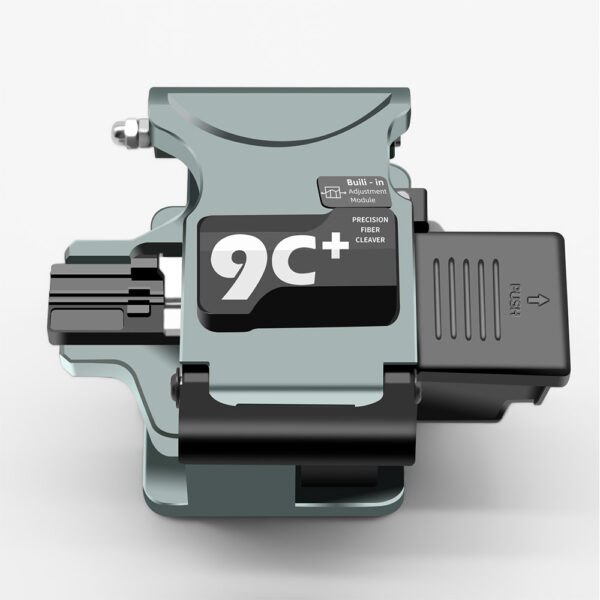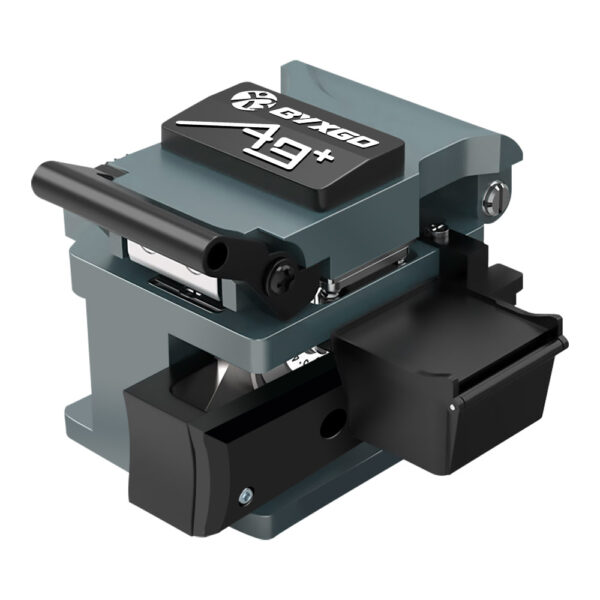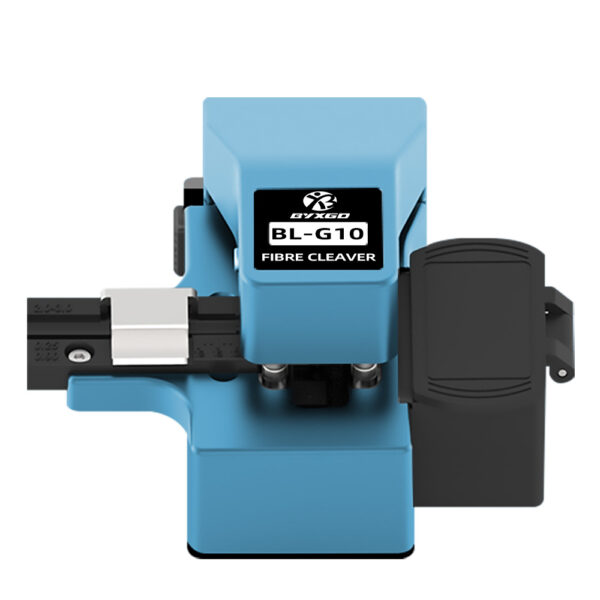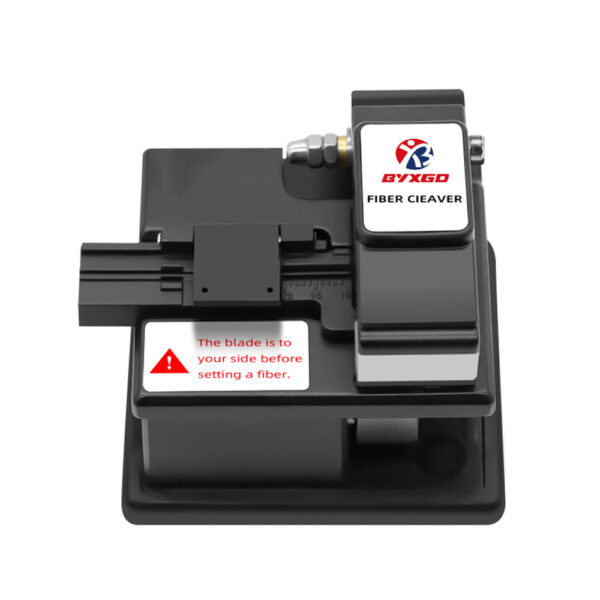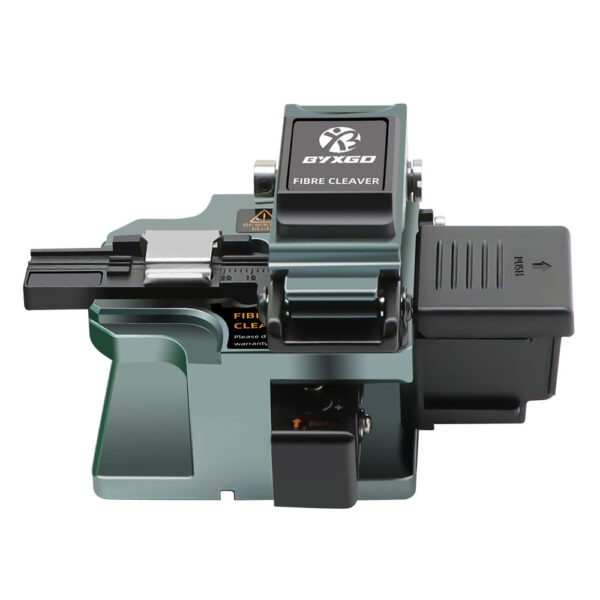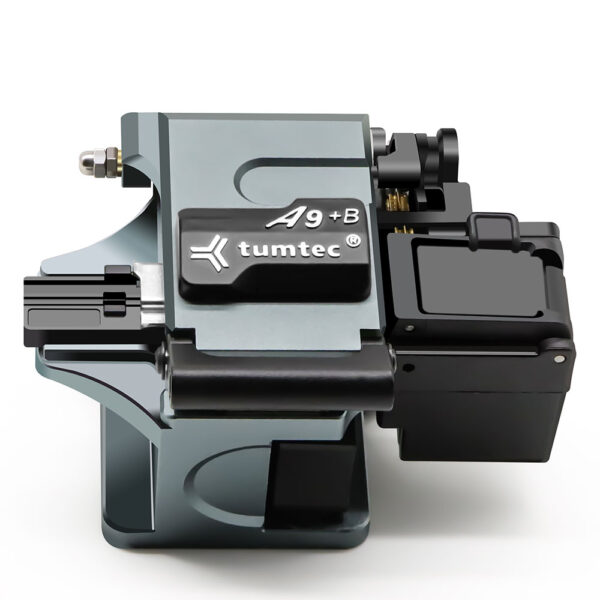Fiber Optic Cleaver
Which Fiber Optic Cleaver is Right for You?
Fiber optic connections demand accuracy, and the correct fiber optic cleaver is crucial. As technology improves rapidly, there are now tools that suit your real application (i.e., installation, repair, or DIY). This ensures better networks with reliability and low loss. There is a chain of decision-making extending from experienced engineers to inexperienced hobbyists, with each affecting efficiency and, thus, long-term quality.
Showing all 6 results
9C+ High Precision Fiber Cleaver Tool with Automatic Blade Rotation & 3-in-1 Fiber Holder for Low Loss Cutting
Original price was: $120.00.$84.00Current price is: $84.00.A9+ High Precision Fiber Optic Cleaver, Aviation Aluminum Alloy, Portable Cutter for 0.25mm~0.9mm Fibers
Original price was: $80.00.$62.00Current price is: $62.00.G10 High Precision Fiber Optic Cutter Tool for One-Step Fusion Splicing of Single and Ribbon Fiber
Original price was: $68.00.$49.00Current price is: $49.00.G6 Fiber Optic Cable Cleaver Tool with Durable Blade Life for Hot Melt and Cold Joints
Original price was: $48.00.$29.00Current price is: $29.00.G8 High Precision Cutting Tool Fiber Cleaver For Precise <0.5° Cutting Angle & Multi-Fiber
Original price was: $60.00.$32.00Current price is: $32.00.Tumtec A9+B 3-in-1 Fiber Optic Cleaver for Single Core Quartz Fiber, 48,000 Cleaves, Anti-Breakage
Original price was: $90.00.$68.00Current price is: $68.00.Understanding Fiber Optic Cleaver Types: Manual, Automatic and Specialized
A fiber optic cleaver is used to cut optical fibers accurately, resulting in clean, flat end-faces for strong splicing with the least amount of loss. It is important to cleave high-quality optical fibers because even minor flaws in the cutting process can cause errors in transmission or weak connections. The stability of the network depends on reliable and consistent cleaving.
Manual fiber optic cleaving tools, also known as "cleavers," are effective for basic splicing or repairs. These types of tools require the user to manually align and score the optical fiber. Therefore, both technicians and fiber optic enthusiasts utilize this type of fiber optic cleaver for smaller jobs, as it is commonly a more affordable option.
Automatic fiber optic cleavers can score and break the fiber in a single action. Automatic fiber optic cleavers can save time in the process and reduce the user error factor, which is why they are favored by those in the telecom world and are used frequently in very busy operations.
Another type of fiber optic cleaver is the FC 6S. This fiber optic cleaver is a specialty version that adds a high-quality cleaving blade design and ergonomic functionality to a fiber optic cleaver. This type of fiber optic cleaver is typically used in laboratories or by customers who require consistent results at a higher level of precision.
Choosing from the different types of fiber optic cleavers often comes down to whether you are doing many jobs in a day, how accurate the cleaving needs to be, and what kind of daily environment you are working in. Each cleaver type will satisfy various users and respective situations, which is a balance of cost, convenience, and precision.
Key Criteria: What Makes a Good Fiber Optic Cleaver?
When selecting a fiber optic cutter for optical fiber cleaving, it's not as simple as selecting a familiar brand name. Blade quality is a priority. Sharper and longer-lasting blades will provide a cleaner cut along with less time spent replacing the cutting blade. Also, check to make sure the cleave angle is consistent, as this will minimize signal loss, making your communications system more reliable.
When deployed, technicians will choose a fiber cleaver tool that is rugged and easy to operate, as the job often requires moving quickly from site to site. Lab users may need pinpoint accuracy and repeatable results. All things being equal, lab application users will seek durability and stable performance. A comfortable grip and ease of mechanics reduce fatigue for technicians working long days in the field.
Quick Checklist:
- Sharp, replaceable blade
- Consistent angle every time
- Rugged beyond rating for harsh environments
- Simple operation for speed
Choose a fiber optic cutter that fits your actual use case. Making the proper fiber optic cutter selection will provide you with smoother work and fewer problems down the line.
Comparing Popular Fiber Optic Cleavers: Table & Visual Guide
Not all fiber optic cleavers are the same—different users have different needs, budgets, and maintenance requirements. Below is a brief side-by-side comparison of the best models, each designed for different needs. You will see what some of your decisions might be, along with how to avoid a costly mistake.
| Model | Cleave Type | Best User | Price | Compatibility | Maintenance Needs |
| Basic Manual Cleaver | Manual | Hobbyist, Quick Repairs | Low | Standard fiber sizes | Low |
| Automatic Fiber Optic Cutter | Automatic | Telecom Tech, Field Work | High | Multi-mode, Single-mode | Moderate |
| FC 6S Optical Fiber Cleaver | Specialized Manual | Engineer, Lab Specialist | Medium | Wide range, incl. ribbon | Minimal |
An entry-level manual fiber optic cleaver could be used by individuals who are either starting out or repairing their own home connections, while automatic models would be appropriate for individuals who are certified technicians performing installations and value speed and reliability to produce consistent results and reduce errors at higher volumes on larger install jobs.
The FC 6S optical fiber cleaver is for professionals performing the same precision cuts day after day, who are looking for dependable results and consistent reliability.
With each option here and simple visual cues for you to associate with how you will use it, I hope this table speeds up your decision-making—look for manual if budget is going to be an issue for you, automatic if you are working a busy shift, and specialized if you are splicing every connector. Each of these models effectively targets a different scenario, where the right fiber optic cutter is truly centered on your real-world work needs.
Matching Cleaver Selection to Your Use Case: Who Needs What
Different roles require different fiber optic cleavers. Each user has a unique experience in their day-to-day operations, so having the right tool for the right task will yield the best results ultimately. The differences will help deliver better value.
Telecommunications Installer
Field teams typically deal with large-scale installations, cut tickets, and need tools to complete work more quickly. For this application, the best tools are automatic fiber optic cleavers or high-quality fiber optic cutters. These options provide a quick path to splicing and create a more consistent end product. They also decrease the occurrence of mistakes in a busy environment and when potentially working with multiple cables on outside lines.
FTTH Technician
With fiber-to-the-home applications, a portable option is best, with a heavier focus on durability. Ideally, the fiber cleaver tool will survive in the tight space of a utility cabinet while also fitting in a crowded technician field kit. The cleaver makes quick work of replacing failed cables as well.
Lab Engineer
For lab professionals, precision and high accountability are paramount. Some experiments or high-bandwidth applications will require consistency with ultra-clean optical fiber cleaving. You will want to use something like an FC 6S or a lab-grade cutter. Either option delivers a clean, accurate, and long-lasting cleaving experience. These are particularly strong testing or quality control pieces of equipment.
Casual User or Hobbyist
For occasional users, such as those putting in a home network or performing small, quick fixes, a more basic, cost-effective fiber optic cleaver is useful. The most straightforward options are often manual models, generally available and easy enough to use when making just a few simple repairs, without expense or hassle.
When to Choose Each:
- Automatic for times when speed and volume matter (telecom applications or FTTH)
- Manual cleaver when you are on a tight budget or working on small, quick projects or repairs (DIY)
- Specialized cleavers reserved for lab usage, where every splice must meet some inspection or specification
Choosing the appropriate fiber cleaver tool allows for less hassle and is an integral part of the real working world of fiber optics.
Innovations and Latest Standards in Fiber Optic Cleaving
Fiber optic cleaving tools have also gone through significant advancements in the last several years, now enabling faster install times and more reliable results.
- Auto blade rotation is prevalent in premium cleavers today, with automated blades constantly adapting blade height and tension to maintain stable and high-quality optical fiber cleaving, even after thousands of cleaves. This automatically mitigates the user's propensity for error and increases the longevity of the tool.
- The fiber optic laser cutter is changing the game by using high-energy light to produce clean, mirror-smooth ends while reducing cracks and chips during installation. This reduces pre-setup for connectors and splicing, increases performance, and decreases maintenance time. Laser systems cater to mass production and single-fiber jobs alike.
- New standards by ITU-T, like G.657 for bend-insensitive cable, and updated guidance ensure modern cleavers conform to advanced network requirements, guaranteeing precision and low-loss transmission for next-gen multi-gigabit fiber optic installations.
Together, innovation and standards enhance performance, user experience, and future-ready results in fiber optic projects.
FAQs
Is it advisable for regular users to invest in an FC 6S optical fiber cleaver, or is a standard cleaver acceptable?
For professionals and everyday installers, the FC 6S cleaver is reliable and built to last. However, hobbyists and those performing simple repairs will usually find that a basic fiber cleaver tool will satisfy their needs.
How often should replacement blades be changed?
Replacement blade longevity depends on usage and fiber type. If cuts show poor straightness or connection loss increases, it’s time to move/rotate or replace the blade. High-precision tools like FC 6S help prolong blade life.
Why are the ends of my cleaved fibers poor quality?
Reasons could include dirt on the cleaver, a damaged blade, incorrect use, or poor alignment. Cleaning the tool and checking fiber fit and blade alignment often solve these problems quickly.
Does every job require a cleaver?
Not really. Most general applications are fulfilled by everyday manual or automatic cleavers.
Concluding Thoughts
Choosing a user-friendly fiber optic cleaver for the job—along with understanding the realities of fiber optic cleaving—will generally produce acceptable cuts and meet expectations. Finding the right fiber cleaver tool will improve productivity and help you avoid potential future problems.

